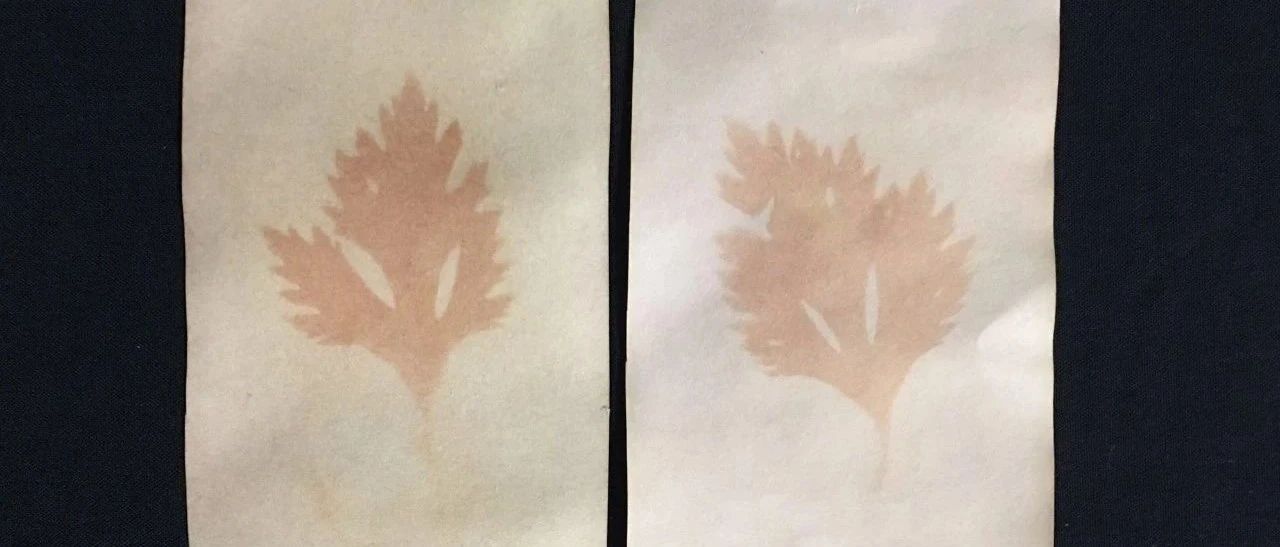
I came up with the name (
the blue sun has a long history of photosensitive technology more than once before, and two reagents of ferric ammonium citrate and potassium ferricyanide are used in the blue paper. Although they are all low-toxic reagents and are not difficult to buy, they still don't feel at home (and you will find that you can never use up a bottle of reagents for a lifetime. ).
Today, we will introduce a more simple photosensitive technology for the home version. Turmeric is used this time, which is also often used in curry.
of course, this method of printing pictures is indeed relatively simple, and it has some obvious disadvantages compared with blue exposure, which will be discussed later.
first of all, my test results:
(there is nothing to sun but a celery leaf)
then
in fact, the whole process is very similar to the experiment of acid-base discoloration of turmeric paper, but it is the process of exposing one more thing to be exposed in the sun. The specific steps are as follows:
1 to make turmeric paper
first get turmeric powder (or curry powder). Note: turmeric is not ginger.
find a small container (preferably glass or ceramic, otherwise the color of turmeric is not easy to wash off), add a pinch of turmeric powder, then pour in a small amount of alcohol (medical alcohol), stir, and then wait for the particles to settle. Then use the brush to dip in the liquid and brush on the paper.
Paper can be printed with printing paper, and the color is brushed evenly and then dried.
figure can refer to the previous push "Blood Carnival"! Turmeric paper experiment has been comprehensively upgraded to
but be careful not to brush too deep this time because of different purposes.
This is the moment to upgrade your wardrobe and include a bit of element formal budget-friendly wear. Perfect for formal functions or informal parties.
2 photosensitive
cover the dried turmeric paper with something you want to outline (in this case, celery leaves) and place it in strong sunlight . I've been basking here for 2 hours, and I can stay longer if I want a more obvious effect.
3 develop
remove the cover on the paper, in fact, you should be able to see that the covered part is darker yellow than the other parts, but in order to make the image more obvious, you need to add some alkali to make the turmeric paper red. The developer can be developed with baking soda or edible alkali solution (depending on the concentration. Although the tutorials I saw used borax, they only used the alkalinity of the solution, which was not necessary.
curcumin turns red when exposed to alkali, and the color difference between the cover and the background becomes more obvious (see the picture at the beginning).
dry it, and a simple "red" photo is finished (the name is blind to me).
as for the principle, it is actually that the substance that develops color and acid-base discoloration here-curcumin-is a substance with poor photostability, which will degrade under sunlight, resulting in discoloration.
compared with blue exposure, this method has two advantages, one is that it does not require special chemical reagents, and the other is that it is a bit like a negative film, which is dark in color and light in background. It may look more harmonious. However, the disadvantage is also obvious, one is that the photosensitive time required is too long, the photosensitive time needed for blue exposure in the hot sun is in minutes, 15 minutes is enough, and this is in hours …... Another disadvantage is that the work is not easy to preserve. If you have to show it, it will continue to see the light (though not so strong), and then slowly fade _ (: color)
give it a try if you don't dislike it.